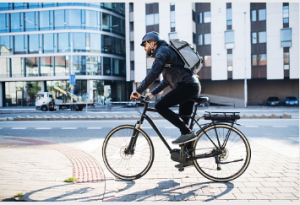When it comes to electric bikes, there are several different options available. Choosing the best one depends on other factors, such as what you are looking for, your budget, and how important it is to you that the bike operates smoothly. Here are a few of the factors that you should consider when purchasing a Pushbikes electric bikes Christchurch:
Battery
It is essential to select the correct battery for your electric bike. Your battery should provide the appropriate power depending on your riding conditions and weight.
 Four main batteries are used on electric two-wheelers: lithium, nickel alloy, nickel-metal hydride, and lead. Understanding each style and its functions is essential to selecting the best battery.
Four main batteries are used on electric two-wheelers: lithium, nickel alloy, nickel-metal hydride, and lead. Understanding each style and its functions is essential to selecting the best battery.
Lithium-ion batteries are becoming more popular because of their low self-discharge rate. They can last up to five years, making them a good choice for people who prefer not to worry about maintaining their battery. However, they are expensive and prone to overcharging and overheating.
Nickel-metal hydride batteries are more energy efficient than NiCd batteries but require a longer charging process. Their high heat output is also a downside. Plus, they are hard to recycle.
Lead batteries are the oldest e-bike battery, heavier than their lithium-ion counterparts. However, they do provide sufficient power for most electric bikes. A typical battery should be rated for 400 volts and capable of producing enough electric current to meet the needs of your motor.
Several brands and models of e-bike batteries come with external battery indicator displays. These displays show the state of charge and allow you to monitor voltage and power settings.
Yose electric bike batteries are an excellent option for users who want protection from overcharging and short circuits. They are available in 13Ah and 48V variants. Other features include a safety lock and an LED battery level indicator.
X-go electric bike batteries are compatible with a wide range of two-wheelers, including city commuters, large-tire, snow beach mountain, and more. Among the features offered by these batteries are a safety lock, an LED battery level indicator, and an Anderson cable connector.
Some e-Bike batteries also offer thermal management, which extends their life in cold weather. The BMS (Battery Management System) balances the energy among the battery cells, removing the links when necessary. This system allows for a longer lifespan and improved performance.
Motor
Motors are a vital part of your electric bicycle. They help you get going from a standstill to high speed. There are different motor designs, with some offering advantages and disadvantages.
Two major motors are used in the modern electric bike: the crank motor and the hub motor. The difference between the two is in the gearing they use.
The most common type of motor in an electric bicycle is a hub motor. These are often mounted on the front or rear wheel. Hub motors are easy to install and are effective in different terrains.
Another popular design is the mid-drive motor. These are often found on mid-to-high-end electric bikes. They offer a smoother ride, and they are efficient as well.
A mid-drive motor is also an energy-efficient and practical design. It delivers a nice dose of performance, and it also has a short battery assist reaction time.
Other motors to consider, such as the brushless DC motor, are often used as the traction motor in electric bicycles. However, the direct drive motor is the most powerful and efficient, which offers maximum speed and durability.
If you want to be green, a wide variety of batteries can be used on your electric bike. Each will have its power rating. This number is calculated by multiplying the battery voltage with the controller’s amp rating. For instance, a 48-V 10-AH battery will power a shaft-driven motorcycle that requires 480 Wh.
When choosing a motor, make sure to read about the features and advantages of each design. Also, find out your needs to find an engine that will match your bike’s personality.
Electric bikes are an excellent alternative to conventional bicycles. They provide the same convenience and are a fun way to enjoy a day outdoors. You can choose from affordable models, styles, and motors.
In addition, an electric bike will come with a controller. These are designed to control the battery, motor, and pedalling. Some include an on/off button for pedal-assist mode. Make sure you choose one that is easy to operate and has various features.
Sensors
Pushbikes electric bikes Christchurch come equipped with two types of sensors. The first is a cadence sensor, and the other is a torque sensor. Generally, higher-end electric bikes are equipped with both of these. It allows you to get the most out of your ride.
In general, the essential function of the cadence sensor is allowing you to measure your pedal strokes and how many of them are. On the other hand, the torque sensor is more complicated. It uses a precision strain gauge to read your pedalling force and sends this information to your control unit.
The torque sensor is a clever piece of technology. It can increase or decrease your motor output power based on pedalling force. And it does so in real-time.
A suitable torque sensor can boost your pedalling power hundreds of times. And since it uses fewer moving parts, it is less likely to break down.
A torque sensor is a great way to transition from a traditional bicycle to an e-bike. Plus, it allows you to go farther on a single charge than with a cadence sensor.
Pedal assist sensors are another way to make an e-bike feel more like a traditional bike. They do this by turning on your motor while pedalling and off when you stop. Some have built-in cruise controls, and most have multiple settings. In addition, you can use the in-built controller to adjust the level of assistance you want.

